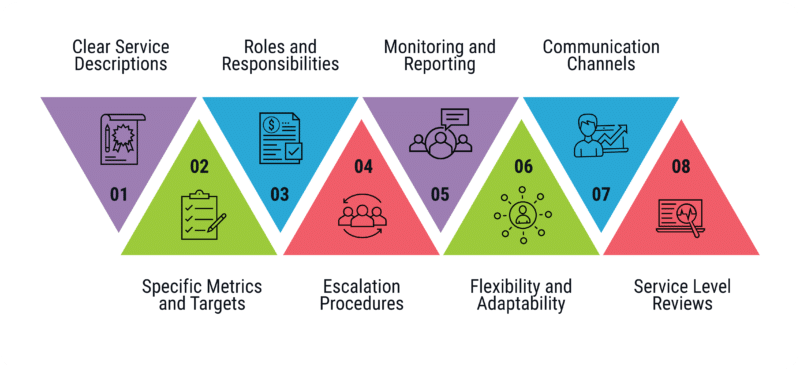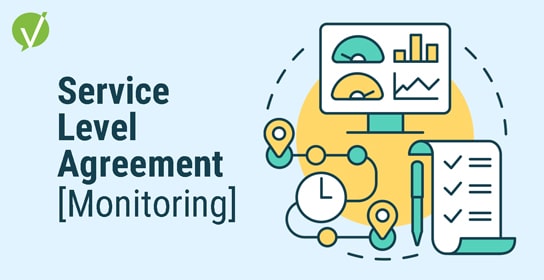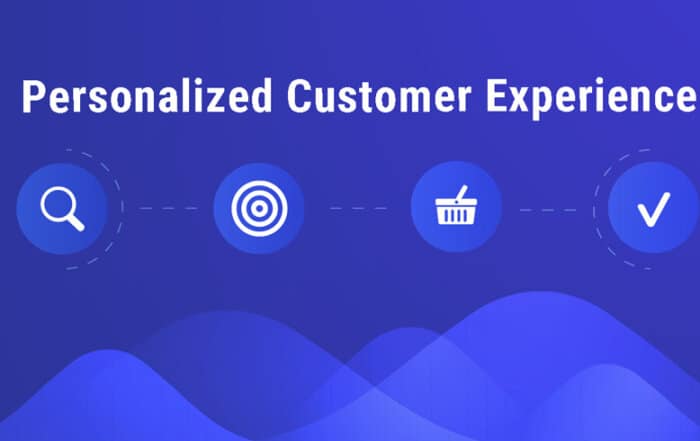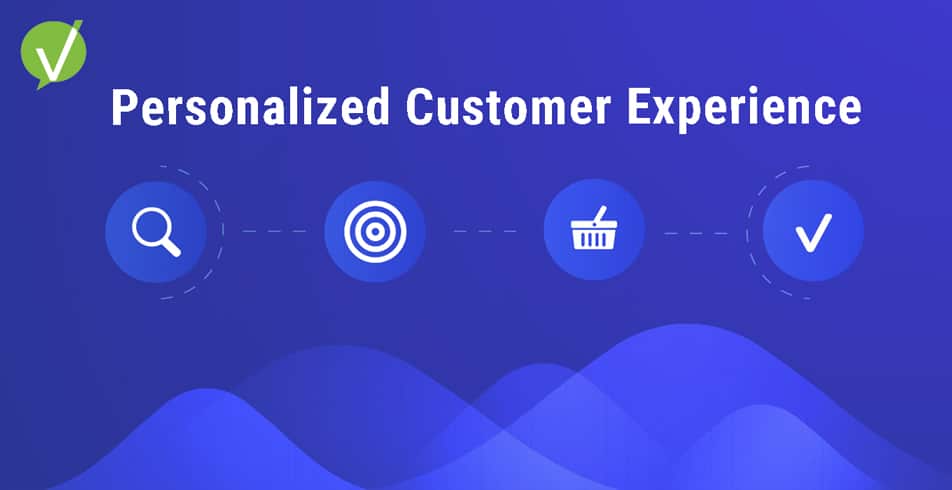Service Level Agreement Monitoring: Understanding Its Role and Importance
Introduction
Things You Will Learn in This Article:
- Explore why SLA monitoring goes beyond numbers and charts.
- Learn how SLA monitoring is a key to achieving service excellence.
- Uncover the vital components to a strong Service Level Agreement.
- How SLA monitoring promotes a culture of continuous improvement.
SLA Monitoring: The Compass to Service Excellence and Business Growth
In the modern business environment, delivering top-notch service isn’t just a goal; it’s the lifeline of success. But how do you ensure that your services consistently meet or exceed expectations? That’s where Service Level Agreement (SLA) monitoring comes into play, and let me tell you, it’s more than just charts and numbers. Think of it as your trusted compass guiding you toward service excellence.
So if you’ve ever felt the frustration of struggling with service quality issues, dealing with customer dissatisfaction, wasting valuable time, or experiencing financial losses, then let’s embark on a journey to understand why SLA monitoring is the simple solution you’ve been looking for.
Imagine you’re a business professional responsible for IT services in a mid-enterprise organization. Here’s how SLAs will impact your world:
- Clear Expectations: SLAs are like the menu at your favorite restaurant; they set clear expectations for the service levels you can anticipate.
- Performance Metrics: Just like a restaurant’s quality check on dishes, SLAs measure response times, uptime, and resolution rates—the crucial indicators of your service’s quality.
- Compliance Assurance: Then there’s how restaurants follow health regulations; businesses adhere to standards and regulations. SLA compliance ensures that your operations are both smooth and legal.
- Continuous Improvement: Remember when your favorite restaurant introduced a new dish based on customer feedback? SLA reporting collects data, identifies areas for improvement, and guides you toward excellence just the same.

But the beauty of SLA reporting is that it’s not only beneficial for service providers; businesses relying on these services also reap the rewards:
- Reliability: Just as you trust your smartphone to stay charged all day, businesses need a stable network to process orders and payments. SLA reporting ensures network reliability.
- Cost Savings: Efficient network operations save money, much like budget-conscious individuals manage their expenses to stay financially secure.
- Customer Satisfaction: An uninterrupted network leads to happy customers and this is similar to how you keep your car well-maintained so your comfortable and safe for all your travels.
- Scalability: As your business grows, so does your IT needs. SLA reporting helps adapt and expand without a hitch, much like a well-planned city infrastructure accommodates its increasing population.

So, why should you care about SLA reporting? It’s the simple solution that ensures your services run smoothly, satisfying your customers, saving you money, and keeping your business thriving. SLA reporting is the recipe for service excellence, whether you’re a service provider or a business relying on those services.
But don’t just take our word for it; let’s explore SLA reporting together and discover how it can elevate your service quality and drive continuous improvement.
Defining Service-Level Agreements
First things first, let’s break down what an SLA is. Think of it as a promise, much like the assurance of your local grocery store consistently stocking your favorite products. SLAs define the agreed-upon service levels between a provider and a customer, ensuring a mutual understanding of expectations.
Now, picture a scenario where your favorite grocery store isn’t consistent. Some days you find all your preferred items quickly, while on other occasions, it takes ages to locate them. That inconsistency is what SLA monitoring aims to prevent. It’s like your store’s staff ensuring that every shopping trip is consistently convenient and efficient.
Components of an Effective SLA
An effective SLA is like a well-structured menu—it’s clear, comprehensive, and tailored to your preferences. We’ll delve into the key elements that make up a strong SLA and explore how each contributes to service excellence.
- Clear Service Descriptions: A well-defined SLA starts with crystal-clear service descriptions. These lay out exactly what services are offered, leaving no room for ambiguity. This clarity ensures that both service providers and customers have a precise understanding of what to expect, preventing misunderstandings and disputes.
- Specific Metrics and Targets: Metrics are the benchmarks against which service quality is measured. Specific metrics, such as response times, resolution times, or uptime percentages, provide a quantifiable way to assess performance. Targets set the bar for service providers, pushing them to consistently meet or exceed customer expectations.
- Roles and Responsibilities: An effective SLA outlines the roles and responsibilities of both parties involved. It clarifies who does what, making it easier to track accountability and ensure that tasks are completed as agreed upon. This role clarity minimizes confusion and streamlines workflows.
- Escalation Procedures: No matter how well-prepared you are, issues can arise. This is where escalation procedures come into play. They define the steps to take when service issues aren’t resolved within acceptable timeframes. Effective escalation processes ensure that problems receive the right level of attention promptly.
- Monitoring and Reporting: To maintain service excellence, constant monitoring and reporting are crucial. SLAs should include mechanisms for continuous monitoring of performance metrics. Regular reports help track progress, identify areas for improvement, and maintain transparency between service providers and customers.
- Flexibility and Adaptability: Business environments change, and so should SLAs. A good SLA recognizes the need for flexibility and outlines how adjustments can be made when necessary. This ensures that the agreement remains relevant and effective over time, even as circumstances evolve.
- Communication Channels: Open communication is key to addressing issues promptly. SLAs should specify the channels through which customers can reach service providers and how quickly they can expect responses. This accessibility fosters a sense of partnership and trust between the parties.
- Service Level Reviews: Regular reviews of the SLA’s effectiveness are essential. They provide an opportunity to assess whether the agreed-upon targets are being met and whether adjustments are needed. These reviews help in refining the SLA for ongoing service excellence.

By thoughtfully crafting each of these sections within your SLA, you create a simple solution for delivering exceptional service. Clear definitions, accountability, adaptability, and open lines of communication all play important roles in ensuring that your organization consistently provides top-notch service, ultimately leading to customer satisfaction and business success. And in the end, that’s exactly what every business wants.
Benefits of Using SLA Monitoring
Let’s continue with our grocery store example. Just like your grocery store benefits from consistency and satisfied customers, SLA monitoring brings a host of advantages to both service providers and businesses relying on those services. Let’s delve into these benefits and understand why they matter.
- Enhancing Service Provider-Customer Relations: In a world where relationships matter, SLA reporting acts as the glue between service providers and businesses. It fosters trust, communication, and collaboration, much like when the store associates remember your preferences and greet you with a smile.
- Creating Customized SLA Reports: Now, think of your grocery store offering personalized discounts based on your shopping history. Customized SLA reports are like tailored savings—businesses receive the data and insights that matter most to them, enhancing their service quality in a way that suits their unique needs.
- Configuring SLA Reports: Creating an SLA report can be as straightforward as navigating the aisles of your favorite store. Vivantio can walk you through the steps, ensuring you’re equipped to compile an effective report.
- Measuring SLA Performance: Real-Time and Historical: Imagine your grocery store analyzing real-time purchasing data to predict busy hours. SLA monitoring provides real-time and historical data to accurately measure your service’s performance and helps you anticipate and respond to changing customer demands.
- Decoding SLA Metrics: Key Performance Indicators: Just as your grocery store tracks the popularity of various products, SLA metrics serve as key performance indicators that assess your service’s health. We’ll demystify these metrics and help you understand the significance of each data point.
- Embracing a Culture of Continuous Improvement: Finally, recall when your grocery store introduced new products based on customer feedback? SLA reporting encourages continuous improvement, like how your store aims to enhance its offerings based on shopper preferences.
By harnessing the power of SLA reporting and monitoring, you can steer your organization toward a future of exceptional service, operational efficiency, and enduring customer contentment. So, grab your grocery cart, and let’s take the first step towards elevating your service management practices with confidence.
Navigating the Dynamics of SLA Monitoring
Adopting SLA monitoring isn’t just a strategy; it’s a necessity. As technology continues to advance, the demand for innovation grows. SLA monitoring serves as your guiding star in this dynamic environment, ensuring your services remain at the forefront of addressing your customer’s needs.
So, whether you’re a service provider striving for utmost client satisfaction, a business seeking to streamline operations and cut costs, or a network administrator aiming to optimize performance, SLA monitoring is your formula for success. It’s time to seize control of your service quality, fuel continuous improvement, and lay the foundation for enduring customer satisfaction.
Embark on Your SLA Monitoring Journey with Vivantio
For over two decades, Vivantio has been at the forefront of enhancing service quality through comprehensive SLA monitoring. To discover how Vivantio can elevate your service quality through SLA monitoring, reach out to our team today or sign up for a free demo.
Your voyage towards service excellence begins here. Embrace it with Vivantio!













